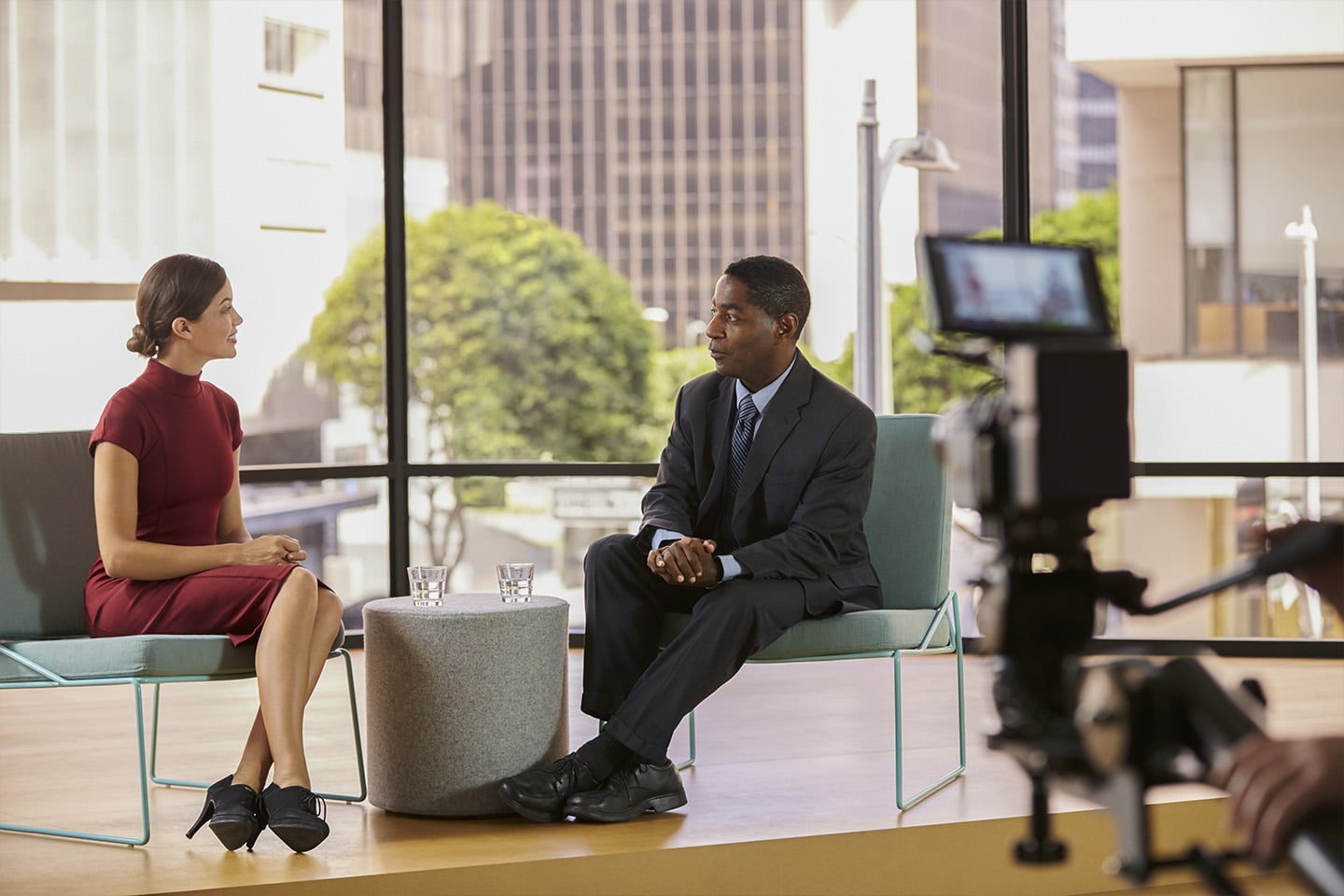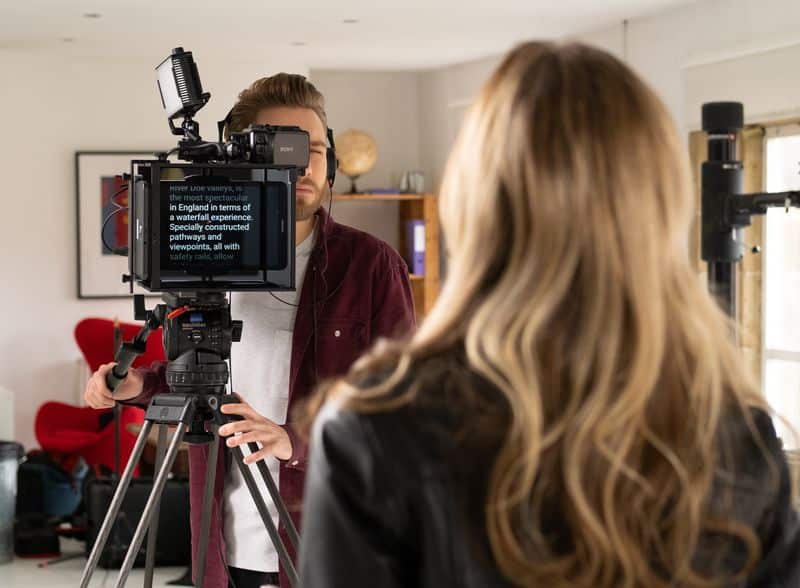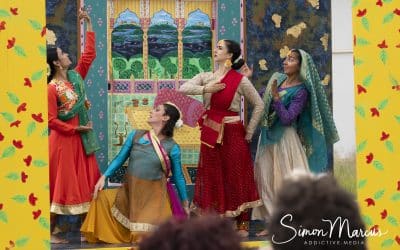Why on earth would I want to appear in a video?

There are many reasons you or a colleague might appear on a video but crucially, people buy from people; whether that is buying a service, a product or concept.
Maybe you want to create a promotional film for a service or product, maybe you’ve been tasked with or asked to organise a training or onboarding video, a promotional film or perhaps you’re working on a fundraising campaign.
Whichever the case, video is a brilliant way to convey your message in a personal, relatable way, creating a feeling of trust from the viewer, which a slick corporate video with a paid professional presenter might not be able to achieve.
Including short ‘soundbites’ from interviews with you or your people, can really personalise your video content, and help further engage your audience.
Here are a few video interview tips to get the best from everyone.
1 – Be prepared

Ensure you (or whoever is being filmed) is aware of the objectives of your video; be it to raise funds, raise awareness or encourage sales to your target audience.
And talking of audience, do consider who your audience might be, to enable you to relate to them appropriately in terms of the tone, language or terminology you use.
2 – Clothes matter

Some things to consider before filming begins. Does your outfit reflect the tone of the video? Should you dress informally or professionally?
For health and safety reasons, should you be wearing, and be seen to be wearing, particular PPE (personal, protective equipment)?
Occasionally, clothes with intricate crisscross, herringbone patterns on them can create visual artifacts on screen so are best avoided.
If you are being filmed with a ‘green screen’ background (enabling us to replace the background during the post-production process) it’s probably best if you don’t wear anything green… or a part of your body may effectively become invisible!
3 – Let’s chat

Prior to the start of filming, having a short chat about work, what you had for breakfast, or the weather, can warm you up (unless it’s a very cold day:); as well as providing the film crew with an opportunity to set the optimal sound levels for their microphones.
Do remember to speak clearly and ensure you are speaking at a pace which is easy for your audience to follow.
4 – Body language

Another thing to consider is body language. By this I am referring to ensuring that you are standing or sitting up straight, with good posture as this demonstrates you are serious, rather than blasé about your subject
Do ensure you maintain an open and welcoming body language, also avoid slouching and fidgeting, as this can come across as unprofessional and be distracting for the viewers.
Another thing to consider is eye contact – if you are able to, look directly into the camera allowing for a more personal connection with your audience.
The same applies if you are interviewing someone off-camera, where it looks better if you focusing on them.
5 – Try not to (over) rehearse

Often a relaxed, natural response to being asked a question on camera comes across best. Providing authentic content can really help connect with your audience; and any ‘fluffs’ can be edited out later.
The video producer will have already discussed key ideas they want to ‘tease out’ and will ask you incisive open questions to encourage the most appropriate responses which will be selected during the post production editing stage.
This is not live, so answers can be repeated in different ways until you and your video producer are happy with the results. It’s great to have an outline of what you want to say but don’t feel you should learn it line for line.
The familiarity of content is useful but not so much so that it starts to seem overly rehearsed and unnatural. And don’t be afraid to pause and breathe from time to time!
6 – Don’t talk in technical terms

Consider carefully before using technical language, acronyms, or abbreviations. Might this disengage your audience?
If there is a script being used, your video producer can help you adapt this for optimum accessibility.
7 – Autocue or Teleprompt?

Although a natural unrehearsed piece to camera is usually best; occasionally you might really need to deliver a more complex ‘near word perfect’ message.
This is when you might be offered ‘autocue’, sometimes known as ‘teleprompt’, facilities.
Essentially, this enables you to see the specific wording to be used, or short text prompts, whilst still maintaining eye contact with the camera lens, thus replicating a natural delivery to the viewer – helping you say all the right words, in the right order!
This approach still needs some skill but with a little practice can come across to the viewer really well.
Conclusion & Contact
Try not to be daunted by the helpful tips above. Being filmed can be fun and helps personalise your business or organisation, to help you connect with your target audience or stakeholders.
If you want to communicate with us then please do so below…






























